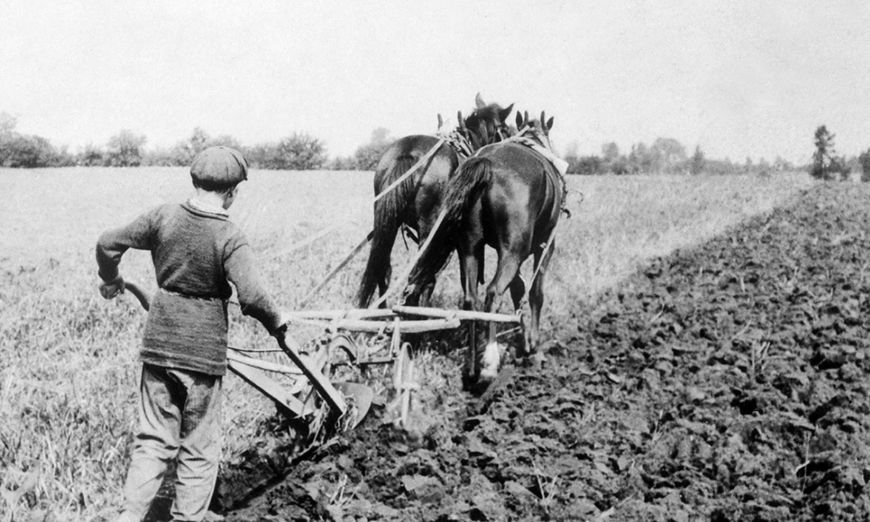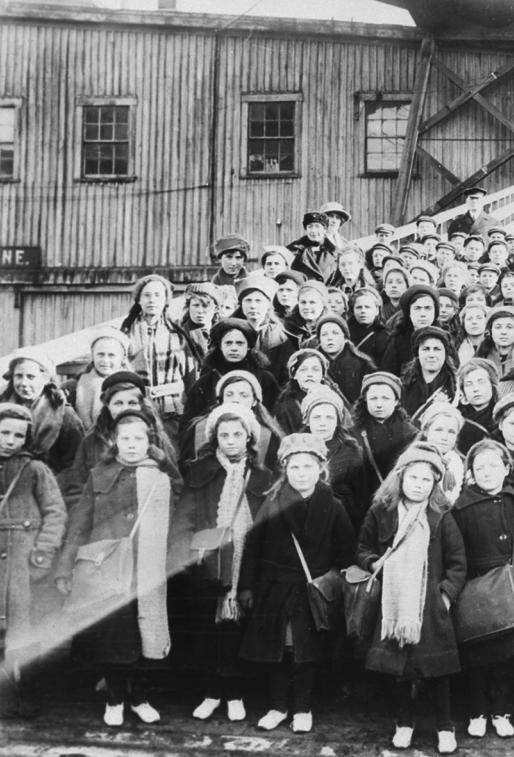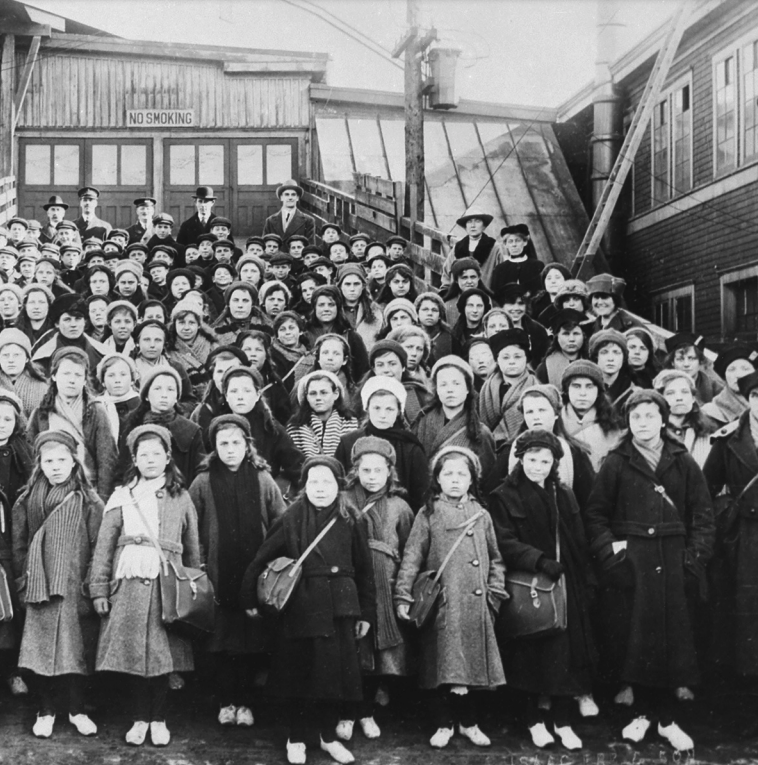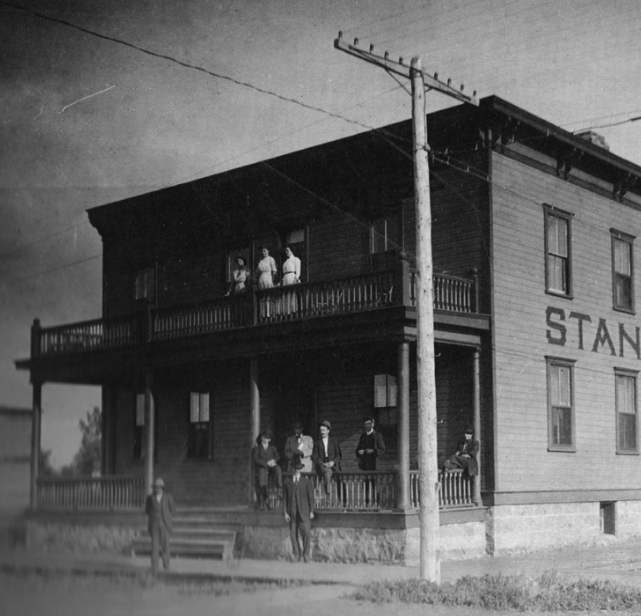Our Forgotten Neighbours
Before Mennonites migrated from Russia in the 1870s, a steady stream of young immigrants to Canada had already started. In the last half of the nineteenth century, Victorian England found itself plagued with a variety of social problems, including children roaming the streets of their cities. Although some were orphans, others belonged to parents struggling to provide for their families. The Industrial Revolution had brought a great number of people to the cities, resulting in overcrowding and poverty. As people moved, they lost the traditional support system of friends, neighbours, and family that they had relied upon in smaller communities. If disaster struck in these urban areas, they were on their own. Although workhouses offered the desperately poor food and shelter, and provided education for children, more needed to be done. A well-meaning yet cruel plan was devised whereby pauper children would be sent to Commonwealth countries. These boys and girls became known as home children.
In 1869 the children began arriving in Canada. The younger ones were sent for adoption and those over five years of age were placed with families as indentured servants. As harsh as life had been in the workhouses or on the streets, the farms and homes of Canada were not a big improvement. Some children were welcomed into their new homes, but others found their new families severe and unsympathetic. Many were overworked and abused, often denied proper food and shelter. Inspection and oversight were inadequate. Most times these wounded children would not talk about their experiences once they grew older. Psychologist Perry Stone, whose father was one of these children, wrote an extensive study on how these children were stripped of their identity so that the break from their family was permanent. Many were told they were orphans, even though this category applied to only three per cent of the children.
In 1874, a month before the first Mennonites left Russia, the Local Government Board in England sent inspector Andrew Doyle to Canada to assess the child emigration system. He spent time investigating the child distribution centres, focusing on their methods of placing children and how the children were doing in those placements. His report did not speak well of the system. He concluded that the children were placed in homes too hastily. He pointed out that not enough care was given to the selection of families and that more oversight was necessary to protect children from mistreatment.
One incident of such abuse appeared in the courts in 1895. Allan Cameron, a coroner, was called by the police to a farm home near Keppel, Ontario. Upon arrival, he found the body of a young fifteen-yearold boy named George Green. In his forty years of practice he had never seen a body in such a deplorable state. George had been severely beaten and systematically starved. The boy had been in Canada for less than a year, employed by a spinster named Helen Findlay, who operated the family farm after her parents and brother passed away. At the trial witnesses testified to the violence and abuse the boy had endured, which included beatings with an axe handle and being chased and prodded with a pitchfork. Miss Findlay’s lawyers, however, had the boy’s body exhumed, and the doctors who examined it were able to persuade some jury members that the boy died not from abuse but because he had been unfit from the start. The trial resulted in a hung jury and Miss Findlay went free.
Even with such cases taking place, this immigration system continued in Canada without interruption until 1939. Anywhere from 100,000 to 120,000 children were sent to Canada. About 250,000 were sent to Australia, New Zealand, Rhodesia, and South Africa. Some of the children sent to Canada ended up with Mennonite families in southern Manitoba.
Dr. Barnardo’s Homes
It is estimated about fifty agencies worked as agents for the procurement or the distribution of children. One of the best known of these agencies was Dr. Barnardo’s Homes. Thomas Barnardo was born in Dublin, Ireland, in 1845 and died NEIGHBOURLY ENCOUNTERS 3 in 1905. His ambition had been to become a medical missionary to China, and while studying at the London Hospital he would go out into the streets and places of ill repute to spread the gospel. He also volunteered a few nights a week to teach in a “ragged school,” which had been set up for children of the labouring class. He soon realized that there was a need for his work in London, and he started to debate whether he should still go to China.
One incident helped to make up his mind. While teaching at the ragged school he came into contact with one of the “street Arabs,” as the homeless street children were called. One bitter chilly night, a young boy, shirtless, without shoes or socks, and without a hat, entered the school and did not want to leave. After a few questions he found that the boy, ten-year-old Jim Jarvis, did not have a home or parents. Thomas took the boy to his house and fed him, and in the course of the evening he also shared the story of Jesus with him. While telling the story he asked the boy if he knew who Jesus was. The boy answered, “Yes, he is the pope.” As the conversation continued, the boy told of his friends and offered to introduce Barnardo to them. After seeing some of these boys, sleeping on the steel roof of a shed without any cover, in hiding from the authorities, he was haunted for weeks on end. He decided to take action. With encouragement from the Earl of Shaftesbury, a parliamentarian and social reformer, he gave up the idea
of going to China. Instead, in 1870, he opened up his first mission for the homeless in London with the help of some wealthy acquaintances. At his mission he taught the homeless children about morals and cleanliness and gave them a basic education before shipping them off to Commonwealth countries to have a chance at a better life.
Over the years Dr. Barnardo’s Homes grew to a vast organization of over 5,000 workers and over 20,000 fundraising volunteers. In 1888, he expanded his operation into Manitoba, purchasing 9,000 acres of farmland near Russell and establishing an industrial training farm for potential farm workers. Between 1888 and 1907 more than 1,660 British home boys were trained on that farm. Many more were sent directly to Manitoba farmsteads. In the autumn of 1896, Barnardo’s organization opened a receiving house at 115 Pacific Avenue in Winnipeg for boys.
The boys brought to Manitoba by Barnardo’s organization were mostly between the ages of ten and thirteen. Younger children sent to Canada were placed in foster homes in Ontario until they were considered old enough to start working on western Canadian farms. The process of selecting homes for the children had improved somewhat since Doyle made his report. According to Ups and Downs magazine, published in Toronto by Dr. Barnardo’s Homes, when a farmer applied for a farm worker, he
had to supply information including his church affiliation and the recommendation of either a minister or magistrate. If found to be suitable, he was notified when a boy became available, and upon payment of three dollars to help defray the cost of bringing the child to Canada, he was allowed to pick one.
The aim of the organization was to find good homes for the children where they would be treated with humanity and consideration, under kind and wholesome influences, and where they would be well trained for their future in the West. This did not always happen, but Barnardo still expected that the children would be well




